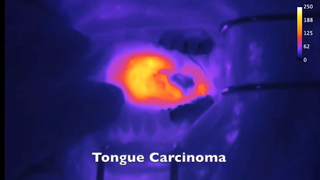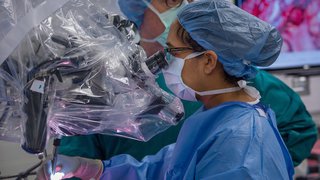“Blindness cuts us off from things; deafness cuts us off from people.” – Helen Keller
Since cochlear implants were first approved by the U.S. Food and Drug Administration (FDA) in 1984, they have been used to treat hundreds of thousands of adults and children who have hearing loss that’s too severe to benefit from hearing aids.
The small electronic devices, which are surgically implanted in the inner ear and activated by a microphone and processor worn outside the ear, send sound information to internal components that directly stimulate the auditory nerve and deliver that sound information to the brain. Cochlear implants can restore substantial hearing sensation in patients with severe to profound hearing loss and in some cases allow 100% speech understanding – equivalent to a person with normal hearing.
Cochlear implants have been a game-changer for many people, and they’ll likely play an even greater role in mitigating hearing loss as our population ages.
However, the current design of cochlear implants presents a few challenges – not the least of which is potential trauma to tissue within the inner ear during placement and inexact positioning of electrodes around the ear’s snail-shaped cochlea.
For more than a decade, my lab at UT Southwestern has been working to develop a self-coiling cochlear implant that uses shape memory polymers (SMPs) – smart materials that reshape with heat rather than physical pressure – to place the device with greater precision and less potential for trauma. Walter Voit, Ph.D., a materials science and mechanical engineer at UT Dallas, has partnered with me on this journey since we met in 2010. Our research really took off when we first co-presented about the SMP concept at the Conference on Implantable Auditory Prosthesis in 2011.
Today, the device is moving closer to human clinical trials, reflecting our shared commitment to improving cochlear implants and their potential to enhance communication and quality of life for patients all over the world.
How self-coiling cochlear implants work

Currently, cochlear implants consist of four key components:
- A microphone and sound processor, which sit behind the ear and pick up sounds and convert them to digital signals.
- A receiver implanted under the skin that converts the signals into electrical impulses.
- Electrodes implanted in the inner ear that coil 360 degrees around the cochlea – a snail-shaped organ in the ear – to collect the impulses and stimulate the auditory nerve cells (inside the cochlea), sending signals for the brain to interpret sound.
While the device is effective, the current design has some limitations.
The electrode array starts out as a straight rod-like structure, and as the device is inserted, it presses against the outside wall of the cochlea and must curl to follow the cochlear shape. This process can cause structural trauma and scarring that can lead to loss of nerve cells and further hearing deficits.
In addition, this process naturally positions the electrodes along the outer wall of the cochlea far away from the nerve cells they stimulate, which are near the inner wall of each turn of the cochlea. Thus, the electric signal gets spread out as it travels form the outer wall to the inner wall.
As a result, the signal is less precise. I like to explain it this way:
Placing electrodes on the outer wall is similar to trying to play the piano while wearing boxing gloves and striking multiple keys with each hand. By placing the electrodes on the inner wall it’s more precise, and your able to hit each key with a single finger with the gloves removed.
My research partner, Dr. Voit, has worked with SMPs for most of his career. These materials can take on different shapes at different temperatures.
We have developed a novel electrode array using SMP that is customized to fit perfectly in a patient’s cochlea. The implant is prefabricated to self-coil when it is warmed to a certain temperature. The electrode is straight at room temperature, and as it is inserted into the cochlea, it warms to body temperature and navigates its way through the cochlear spiral, self-coiling without pressing against the cochlear walls and ultimately positioning the electrodes near the nerve cells of hearing that they stimulate. Basically, the SMP materials minimize trauma while maximizing the precision of stimulating the nerve cells.
We have demonstrated through studies on human cadaveric temporal bones – where the cochlea is located – that the device is very effective.
Related reading: Unlocking language for babies who are deaf or hard of hearing
Who may benefit from cochlear implants
It’s a common misconception that cochlear implants are only for people who are profoundly deaf. For example, if you can generally hear when someone is talking but can’t understand what they’re saying even if you have properly fit hearing aids, you may be a candidate for a cochlear implant.
Today, at least 1 million people who could benefit from cochlear implants don’t have one, even though they are typically covered by insurance, including Medicare and Medicaid.
A cochlear implant may be right for patients who have:
- Severe to profound inner ear hearing loss in one or both ears
- Trouble understanding speech even with properly fit hearing aids
- Residual low-frequency hearing sensitivity but severe to profound high-frequency hearing loss in one or both ears
Hearing loss can negatively impact your quality of life. Fortunately, technology behind hearing devices – and especially cochlear implants – is advancing every year.
UT Southwestern is proud to lead the way in offering more patients a chance for better communication with the world around them.
To find out whether you or a loved one might benefit from a cochlear implant, call 214-645-8300 or request an appointment online.











